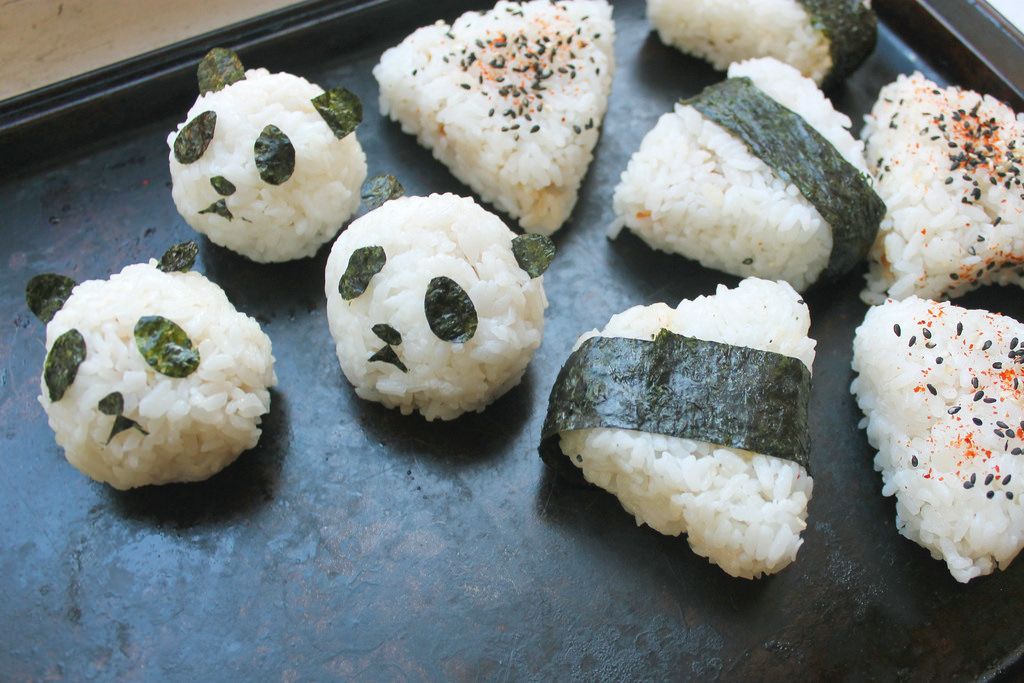DIY Home
Onigiri 101: How to Make Japanese Rice Balls
The perfect, portable snack that won't get soggy on the Shinkansen (or MTA).
Popular on Food52
30 Comments
Mazz
September 27, 2016
I was told at a shop that sells these, that you don't want refrigerate them. They say the rice gets hard and, and that makes sense, but it freaks me out a bit. Especially since I want to put Cooked salmon in them. will wrapping them tightly and putting them in the fridge overnight ruin them?
Alisha G.
December 12, 2014
this is awesome, I've only found one type of japanese rice balls......and now knowing that I can use different kinds of fillings for these, that made me happy :D
kai
March 18, 2014
check out cookpad! although they're waaay too cute to be eaten...
I dunno how Japanese people can make such cute creations and gobble them without a thought.
https://en.cookpad.com/search/charaben
I dunno how Japanese people can make such cute creations and gobble them without a thought.
https://en.cookpad.com/search/charaben
Kayla
March 16, 2014
Excellent, excellent choice for this week! If anyone else is interested in reading more about onigiri, I urge you to head over to Maki's blog at justhungry.com and justbento.com... I'm a huge fan of her easy take on Japanese cuisine. She's done multiple pieces on onigiri. You should check them out!
http://justhungry.com/2003/12/obento.html
http://justbento.com/handbook/bento-basics/onigiri-omusubi-faq
http://justbento.com/handbook/bento-basics/onigiri-on-parade-guide-onigiri-omusubi-rice-ball-shapes-types-and-fun
Will definitely be making this teriyaki salmon this week! Thanks for the inspiration!
http://justhungry.com/2003/12/obento.html
http://justbento.com/handbook/bento-basics/onigiri-omusubi-faq
http://justbento.com/handbook/bento-basics/onigiri-on-parade-guide-onigiri-omusubi-rice-ball-shapes-types-and-fun
Will definitely be making this teriyaki salmon this week! Thanks for the inspiration!
amymm
March 15, 2014
Well shoot. You done did it. Cutest, healthiest, homemade lunch box additions ever. Will try these for kinder lunches!
Alice S.
March 15, 2014
We ate onigiri all the time when I was growing up; my mother is from Japan. We would put a bit of salt in the water/in our wet hands when forming them. This is plain rice, not sushi (vinegared) rice. My daughter preferred onigiri over sandwiches in her lunch box when she was little.
Anna H.
March 18, 2014
What do you usually put in yours? I'm always wondering about kid-friendly fillings.
Alice S.
April 22, 2014
Sorry for the delay...a mixture of katsuobushi (dry flaked bonito) and shoyu (soy sauce) was her favorite as a kid.
Matt Y.
March 13, 2014
This seems like a great lunch idea, but how well do they keep? Can I make a bunch at the start of the week to use as lunch all week? Or do they need to be made fresh daily?
Anna H.
March 13, 2014
As long as you're not using raw fish as a filling, and as long as you wrap them tightly in some kind of plastic wrap or in an airtight container, they will taste pretty good for a full week.
Matt Y.
March 18, 2014
Just made these for lunch and they were awesome! (I still need some practice making them less ugly though...) Even better was that my wife shared some with her sixth-grade students who hate everything, and they loved them as well.
Deathandfood
March 12, 2014
No vinegar in the rice?
Anna H.
March 13, 2014
I've read that you don't traditionally add vinegar to the rice for onigiri, but I'd be curious to know why and how it affects the outcome. Anybody else know?
Kayla
March 16, 2014
It's only because of taste! Once you add sushi vinegar to your japonica rice, it becomes classified as "sushi" in the Japanese culinary view. Still tastes wonderful, though! It obviously doesn't detriment the stickiness at all.
SallyM
March 12, 2014
This is a very cute idea. Thank you. Is there a brown rice sushi rice?
HalfPint
March 12, 2014
@SallyM, I do believe there is because I've seen brown rice sushi at Whole Foods. Maybe they just use a short grain brown rice and make sushi rice by adding seasoned rice vinegar.
Anna H.
March 13, 2014
Taking a look at a few recipes for brown rice sushi, it looks like most of the recipes do call for short grain brown rice, as HalfPint suspected. I bet that would achieve the right stickiness/chewiness, but let me know how it goes if you try it!


See what other Food52 readers are saying.